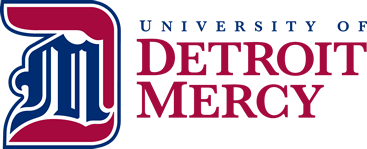When posting videos online, it's important to consider the accessibility of the content. In the case of lectures, it's especially important to caption the lecture material for use by hard-of-hearing students, and for ease of scanning and review of material by all students.
There are three methods of adding captions to videos:
- Automatic speech recognition - Easiest to use but prone to errors. May require manual corrections. Best when you have a lot of lectures to process and/or the audio is clear.
- Manual text entry - Most time consuming. Best when the audio is especially hard to understand or transcribe accurately.
- Transcription services - Simple and fast but costly. Most services charge per minute of video. If your student is working with Disability Services the university may pay for it.
Automatic captioning tools
Microsoft Stream - If you publish your English or Spanish-language lecture videos to Microsoft Stream, part of our Detroit Mercy Office 365 workspace, captions can be automatically generated. Your videos can be hidden from the public and be added to your Blackboard course using the Embed tab of the Share screen. You can log in to Stream using your Detroit Mercy email account. Click here for instructions on adding captions in Microsoft Stream.
YouTube - If you publish your lecture videos to YouTube, part of the Google suite, captions can be automatically generated for many languages. Your videos can be hidden from the public and be added to your Blackboard course using the YouTube Mashup content item. You must log into YouTube using your own personal Google account. Click here for instructions on adding captions to YouTube videos.
Manual text entry tools
DotSub - Provides an interface for manually captioning videos that have already been uploaded to YouTube.
Subtitle Horse - Provides an interface for manually captioning videos that have already been uploaded to Vimeo or YouTube.
Collaborate Ultra - If you are recording a session via the Collaborate Ultra tool, you can assign one or more students to a Captioner role to allow them to transcribe the session live. The transcription will be available for download as subtitles and also stored in the recorded session.
Transcription services
White Coat Captioning - This is the official transcription service used by Detroit Mercy. If you have a student who is working with Disability Support Services, please contact Laura Bagdady at bagdadlm@udmercy.edu or (313) 993-1158 for information on transcription services.)
Temi - If you need to pay for your own transcriptions, this is the most affordable option. Temi only charges $0.10/minute for captioning videos. Note: IDS has not personally used Temi and cannot offer support for their service.
Need more help?
If you're confused by the options or need more information about adding captions to video lectures or publishing captioned videos to your Blackboard course, please contact the Instructional Design Studio at 313-578-0580 or ids@udmercy.edu.



